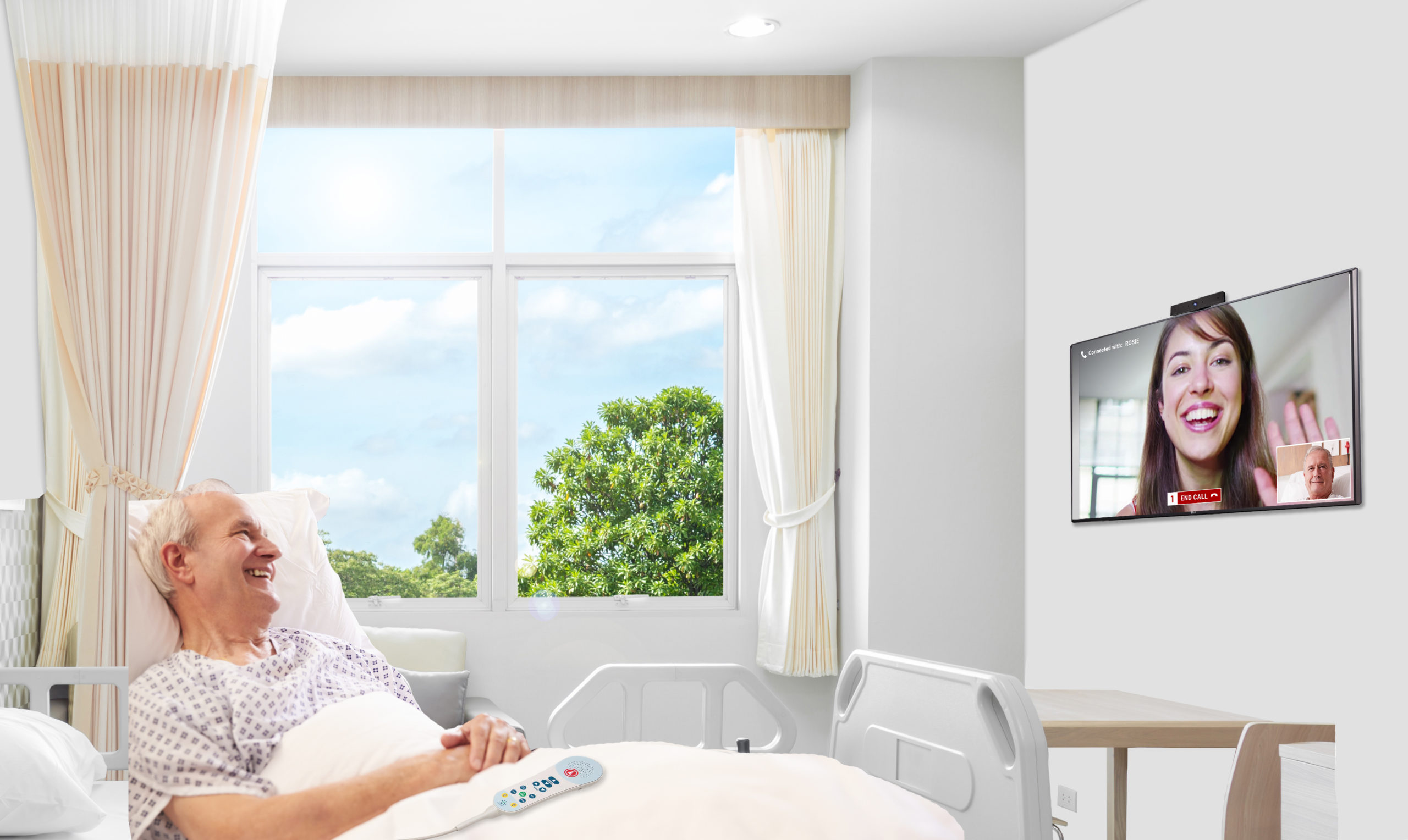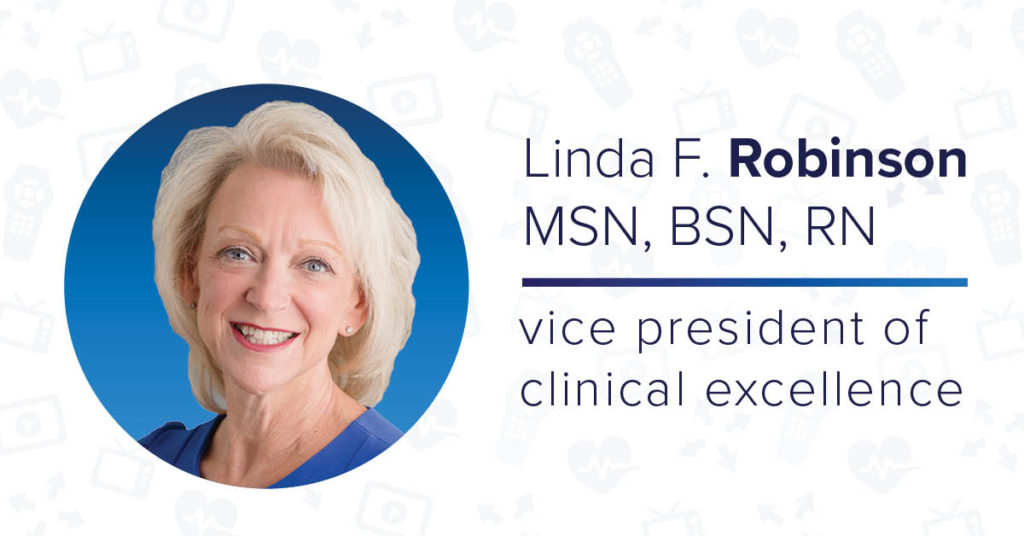
The pandemic accelerated the adoption of technology for patient care, which has been transformative. This innovative technology supports a more patient-centered approach to care. According to an article published by the National Academy of Medicine, “The evolving digital foundation of a person-centered healthcare system is making it possible to envision a system that is more holistic, centers on the needs of the patient and their support structure, and embraces a longitudinal view of health, wellness, and social equity, in contrast to the mostly fragmented, reactive health care system that currently exists.”
The VP of Clinical Excellence at MDM Healthcare, Linda Robinson, MSN, BSN, RN shed some light on the situation in a recent interview. “I've been a nurse for over 35 years and things have changed considerably. It seems like it has been on the verge of transformation for years, but in a matter of months the pandemic broke down long-standing barriers and it just accelerated healthcare technology at a pace that we could never have imagined, and it was out of survival. We had to be able to track data and take care of patients in a way that we never did before. So, we were forced to make fast strategic decisions to meet demands during the pandemic.”
In this new post-pandemic healthcare landscape, patients' perceptions of technology have changed when it comes to their care. Robinson explained, “All of the new technologies that have happened during COVID have really opened the patient's eyes.” She outlined six areas of transformation highlighted below.
1. Shift to a Patient-Centered Model in Healthcare
The new healthcare model is a consumer-centered model. Robinson explained, “This is the new patient-centered model that drives self-care. These patient-centered models have been around for a while but have not always taken off as well as they should. However, with the use of technology, the patient is more engaged and empowered than ever. The patient is the captain of their care team,” she said. Patients can now use an array of services and apps and other technology to get the information that they need. “That really supports the four core principles of patient and family-centered care. It's going to be designed around the consumer's needs, not the hospital's needs. Hospitals used to be designed around the people that worked inside them now they are designed around the patient,” Robinson continued.
The shift to the patient-centered model is a proactive shift designed around prevention and well-being, rather than a reactive approach. “This is something we’ve been trying to move to in healthcare for years,” said Robinson.
2. The Rise of Telehealth
Many patients tried virtual care for the first time during the height of the pandemic. Most found it to their liking, and now millions of patients are opting for virtual visits. According to a recent McKinsey & Company report, “Forty percent of patients in May 2021 said they believe they will continue to use telehealth in the pandemic’s aftermath. In November 2021, 55 percent of patients said they were more satisfied with telehealth/virtual care visits than with in-person appointments. Thirty-five percent of consumers are currently using other digital services, such as ordering prescriptions online and home delivery.” Robinson expanded on why telehealth is empowering patients. “Patients are searching for answers on Google, and Google is great, but they really should get their health information from their provider because that is the best source of information, and it needs to be tailored to the patient. The information patients need concerning their care is not one size fits all.”
3. Change in Outlook About Data Sharing
Patients are now more willing to share genetic information. In fact, research recently published by PEW found that “81% of adults support increased access to health information for patients and providers and those survey respondents said that “the coronavirus pandemic made them more likely to support efforts that enable data-sharing among a patient’s providers and let people download their personal data from EHRs to apps on smartphones and other devices.” Robinson explained what this shift means about the future of patient care. “This is huge because this is something that patients have classically been very reluctant to do. One of the reasons this is so important is because this supports precision medicine or what I would call personalized medicine,” she said. The goal of precision medicine is to predict, prevent and treat disease, but it does it in a personalized way. “So, they're basically looking at your genetic makeup to find out what your treatment plan is,” Robinson continued.
4. Tech Helps Manage Chronic Conditions
According to a recent study published in the National Library of Medicine, “Innovative technology is central in reshaping chronic care. Technology is improving provider practice and helping patients live more successfully with chronic disease.” Those who are managing a chronic condition are more eager to embrace and see value in new technology. “If you think about these chronic disease patients, most of them are elderly, and most of them see on average more than seven different physicians. Research is showing that rapidly advancing consumer technologies that leverage mobile sensors, geolocation, tagging, personal profiles, and streaming data, illustrate information technology, and it’s really making a difference for these patients,” Robinson explained.
5. Patients More Likely to Switch Providers
Today’s patients are more proactive and empowered about their healthcare and are now more likely to switch care providers than before COVID. Survey data published in February of 2022 stated that 69% of patients would switch care providers to have access to enhanced services. “Classically, patients have gone to one doctor their entire life, and have not changed their physician. However, now they're looking for answers and demanding more. They are knowledgeable consumers, and more likely to switch doctors if they are looking for one who offers virtual visits,” said Robinson. A recent Deloitte article suggests the COVID-19 pandemic forced changes on the healthcare system that will have lasting impacts, one of which is a more empowered consumer. It states, “The public health crisis has called on the system to provide consumers access to care from home, and in some ways, encouraged consumers to have more agency in making decisions about their health.”
6. Advancement of Technology
According to a recent Forbes article, “The emergence of digital technology, including cloud, mobile, and data analytics, is breaking down those barriers and providing richer, more effective, and less expensive patient experiences.” Consumers want a multi-touch, digitally enabled experience, and they're willing to shop for it. Enhanced patient engagement using patient technology also leads to better outcomes and supports health equity. Robinson shed some light on this topic. “We must learn how to expand our thinking and see how technology can benefit the patient and their loved ones. There is a wealth of information and engagement they get with the new technology. It closes those gaps in communication and provides a more efficient, streamlined experience. It does this not only for patients and their loved ones but for doctors, nurses, clinicians, and the healthcare organization.” Technology solutions such as Journey PX’s digital whiteboard, My Day Today and Connect, which allows for virtual visits and rounding, create lean workflows which support nurse wellbeing and aid hospital care teams which are struggling due to the nursing shortage.

New technological advancements, changing consumer attitudes, workforce shortages, and the COVID-19 pandemic have all led to a transformation in patient care in recent years. “We're on the brink of the future and it's exciting. "We are in a moment where innovators of technology can broaden their thinking and we can really make strides in every healthcare sector,” said Robinson.
Listen to the full interview on the PX Space podcast available on Apple Podcasts, Spotify, and Amazon Music.


